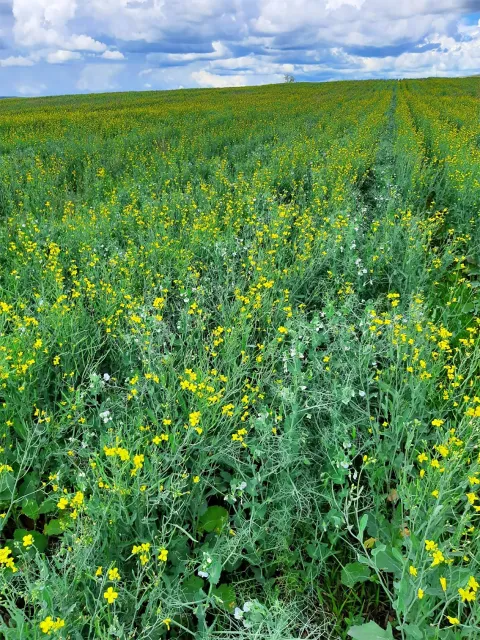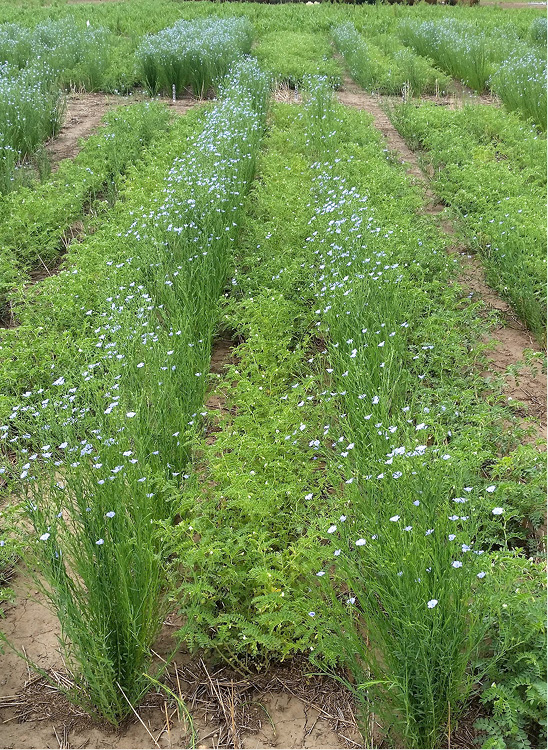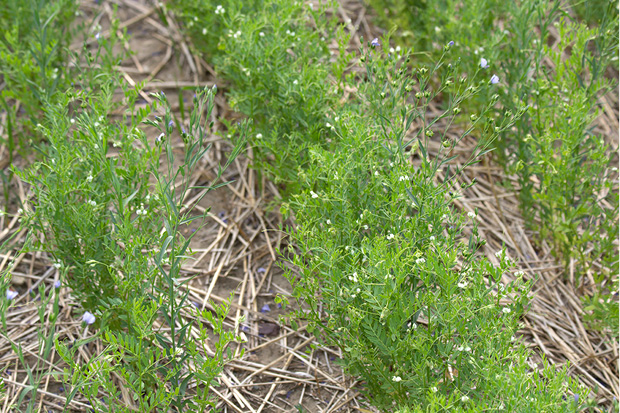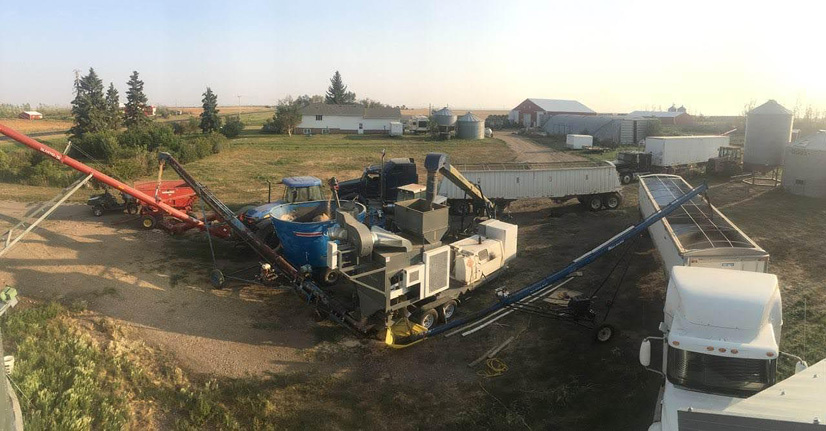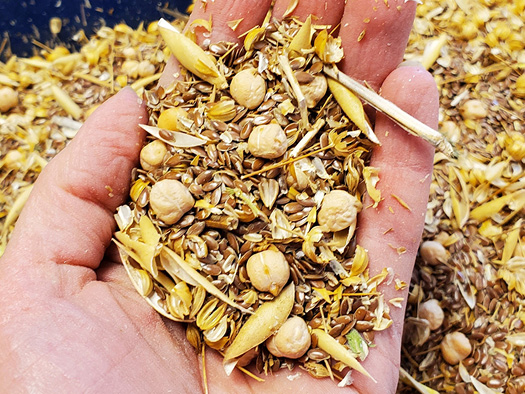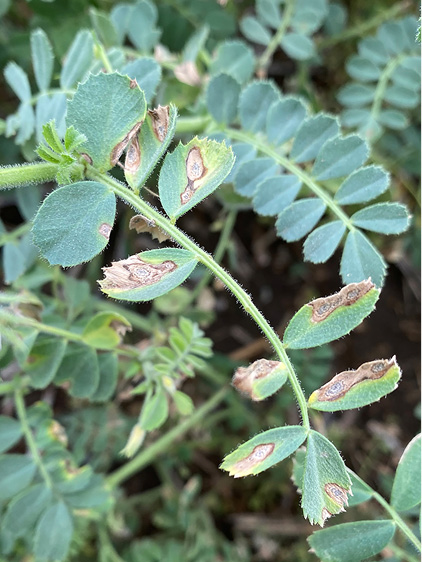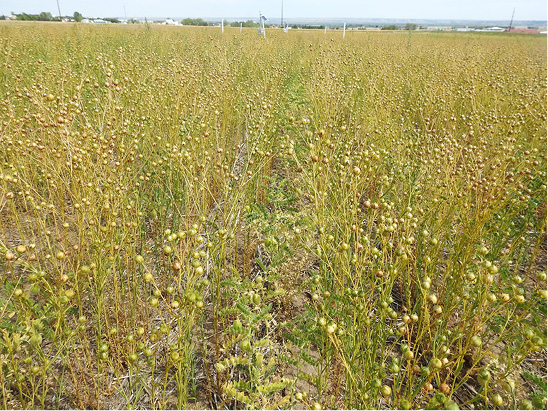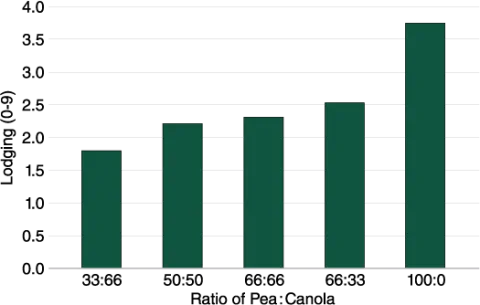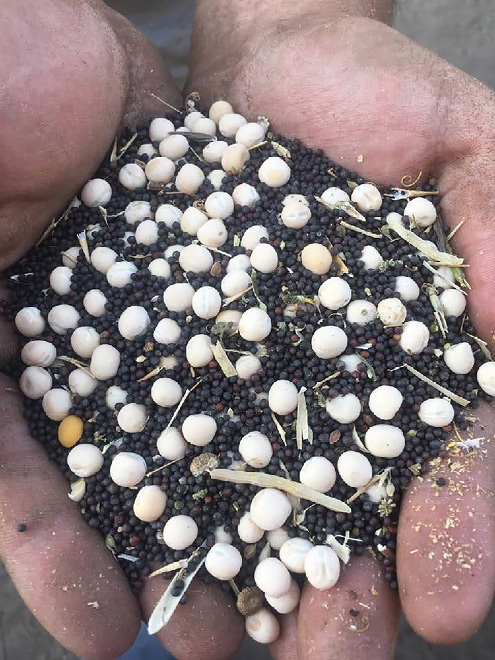Ascochyta blight of chickpea caused by the fungal pathogen Ascochyta rabiei is an extremely aggressive disease and can cause complete yield loss if not managed.
Ascochyta blight of chickpea.
In monocropped chickpea, one to five fungicide applications are required depending on how conducive environmental conditions are to disease development. Growers have reported reduced Ascochyta blight in chickpea intercropped with flax and on-going research supports this observation.
Ascochyta blight severity in monocrop or chickpea-flax intercrop in research studies conducted from 2018-2020. Data comes from multiple sites in Saskatchewan, Canada and North Dakota. IH = Indian Head, SK; RD = Redvers, SK (L. Shaw); ME = Melfort, SK (D. Leach); SC = Swift Current (M. Hubbard), SK; WIL = Williston, ND (C. Keene); and CAR = Carrington, ND (M. Ostlie). * = study treated with fungicides for management of Ascochyta blight.
The mechanism of improved disease management through intercropping has not yet been definitively identified, but it is often associated with modification of the microclimate within the intercrop leaf canopy that alters temperature and moisture (humidity) conditions in a way that are not favorable for disease progression.
Severity of Ascochyta blight is determined both by moisture (humidity and rainfall) and the presence of nearby infested crop residue which is the main source of the pathogen. Thus, management of Ascochyta blight in an intercrop will still require careful monitoring of these factors. To minimize Ascochyta blight, a three-year break between chickpea crops is recommended and growers should not plant chickpea next to fields that were planted to chickpea the previous growing season. Selection of a variety with a high level of genetic resistance to Ascochyta blight and seed testing for the pathogen is also important. By following these recommendations and combining them with intercropping, a grower may be able to reduce the number of fungicide applications for Ascochyta blight.
Weed management in the fall and spring prior to planting the intercrop, particularly for broadleaf weeds, is highly recommended, as there are no broadleaf in-crop options available for this mix. Group 1 grass herbicides such as Select® (clethodim) may be used.
